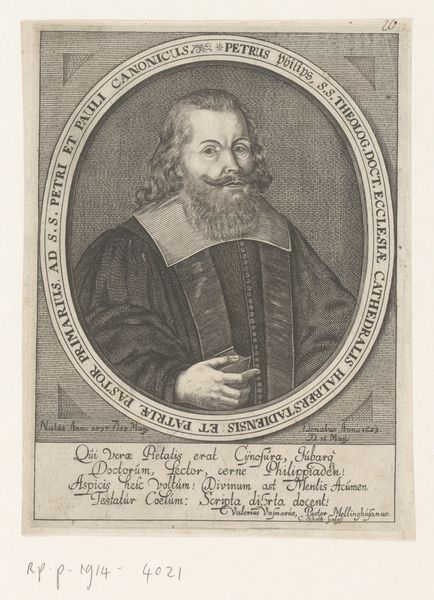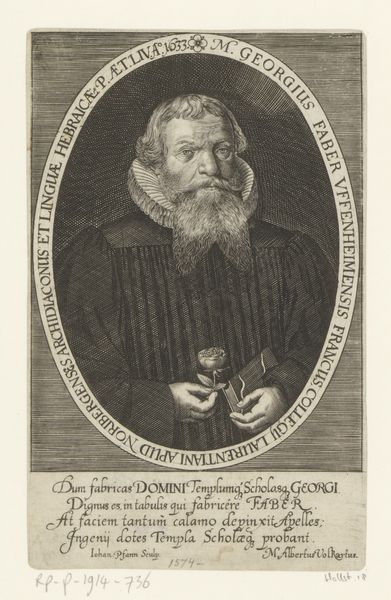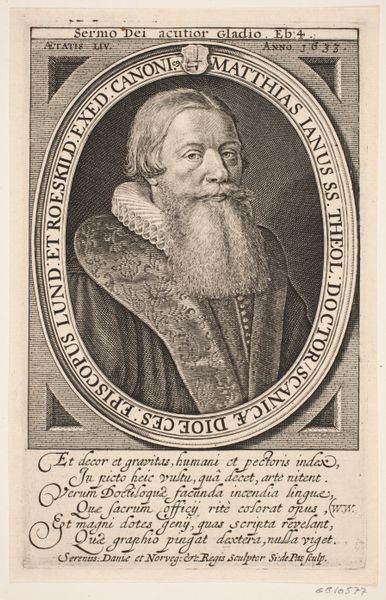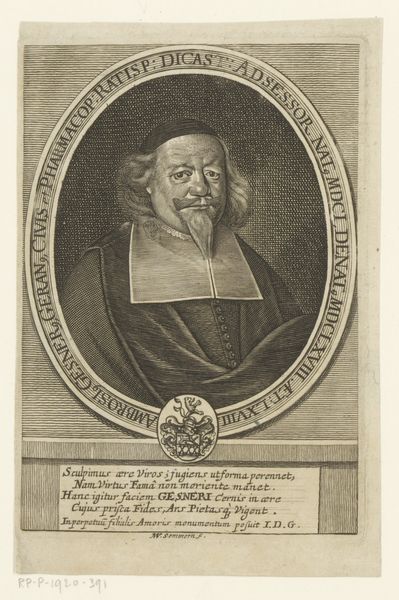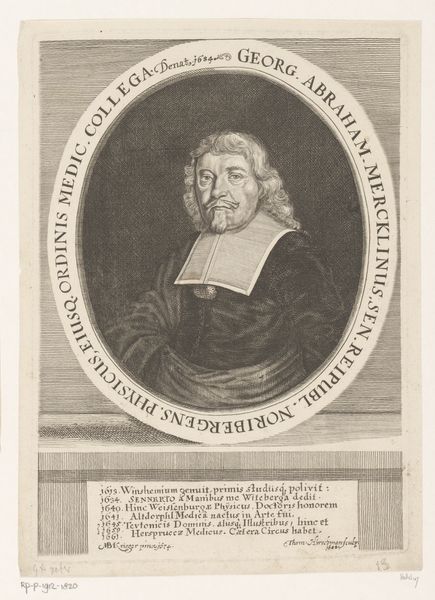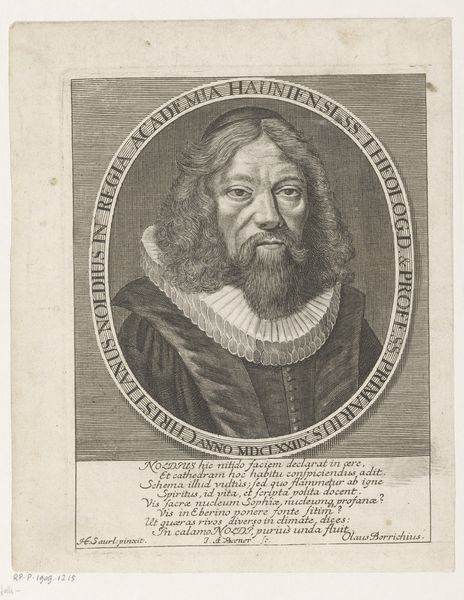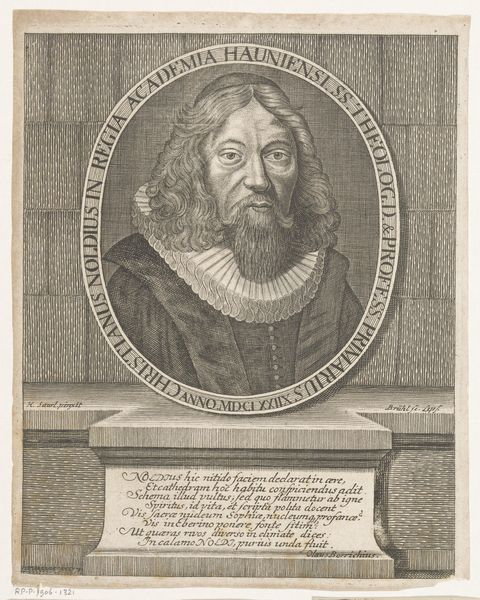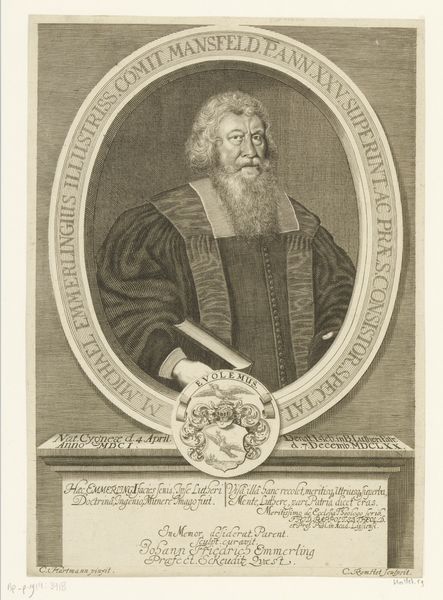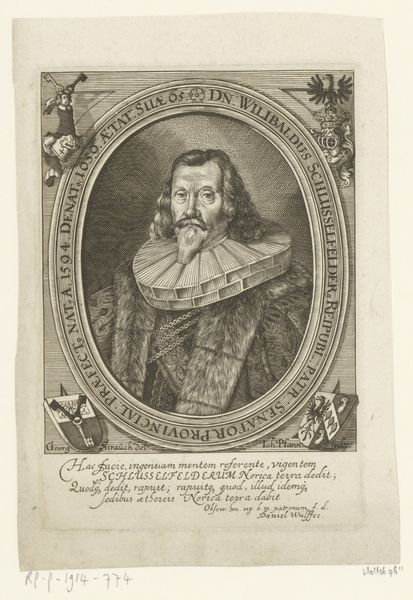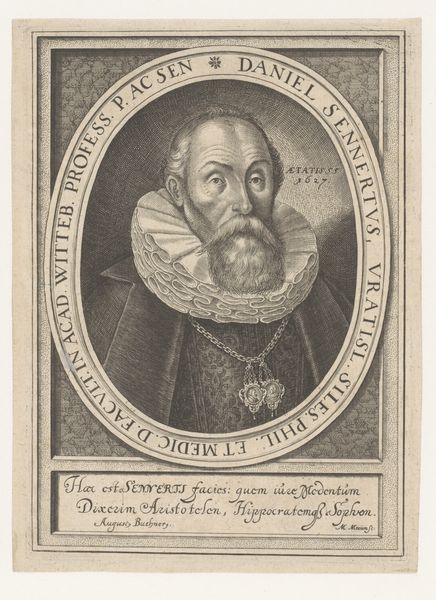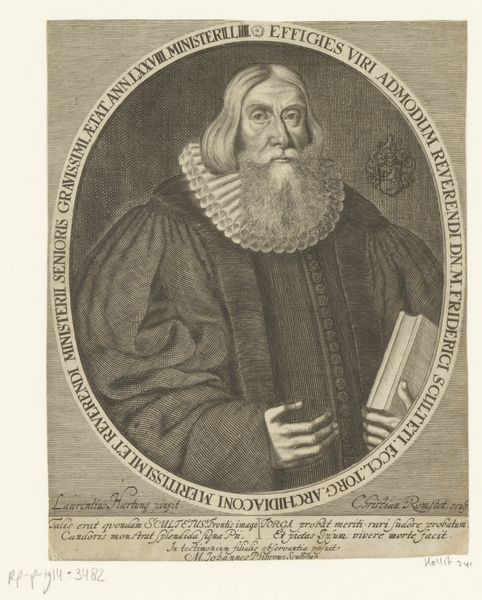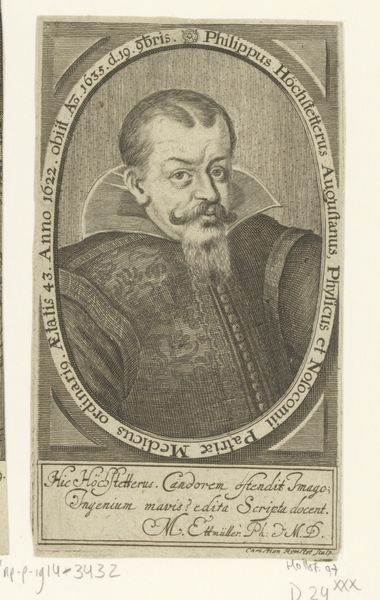
engraving
#
portrait
#
baroque
#
historical photography
#
northern-renaissance
#
engraving
Dimensions: height 191 mm, width 143 mm
Copyright: Rijks Museum: Open Domain
This is a portrait of Konrad Dieterich, made by Johann Philipp Thelott, likely as an print around the mid-17th century. It is an engraving, meaning that the image was incised into a metal plate, probably copper, and then printed onto paper. Look closely and you can see the lines that define the contours of Dieterich’s face, his beard, and the folds of his clothing. These aren’t just descriptive; they also create a sense of volume and texture. Think about the skilled labor involved in creating such an image. The engraver would have needed to be precise and patient, using specialized tools to slowly and carefully cut into the metal. Engraving was a highly valued skill in the early modern period, and prints like this one were often used to circulate images and ideas widely. They were also a way for artists to make a living, producing multiples of their work for sale. So this image speaks to both the skilled labor of the engraver and the expanding market for art in 17th-century Europe. It bridges the gap between art, craft, and commerce.
Comments
No comments
Be the first to comment and join the conversation on the ultimate creative platform.
